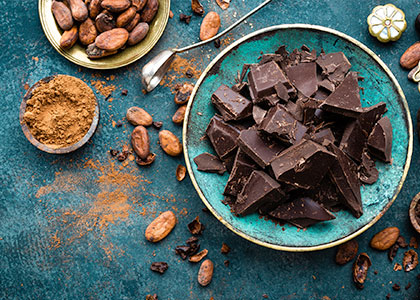
All About Chocolate
By Team Reboot
Chocolate-lovers are familiar with the delights of this confection. But chocolate is more than a treat — it’s rich in flavonoids (aka plant chemicals) and antioxidants. Flavonoids are beneficial when it comes to protecting the heart and blood vessels from free-radical damage as well as cancer-prevention.
According to Kaiser Permanente, having chocolate may help to:
- Lower blood pressure
- Control cholesterol
- Reduce risk of blood clots
- Improve mental functioning
- Improve insulin sensitivity
- Improve mood
And, having dark chocolate in particular may boost your athletic performance, control diabetes and reduce stress, per Johns Hopkins Medicine.
It’s going too far to describe chocolate as a health food. After all, in addition to these potential health perks, chocolate is also high in calories, and some options may be high in fat.
Get to Know the Different Types of Chocolate
All chocolate is made from the bean-shaped cacao seed. That is, cacao is the raw, unroasted form. Cocoa, in contrast, is the result of what happens when the bean is processed — it’s used to make white, milk and dark chocolate.
With processing, flavanols are reduced, which is why some people prefer cacao. It’s available as nibs or cacao powder. Be warned: It doesn’t taste the same as a chocolate bar, but it can be delicious in desserts, smoothies and other dishes.
Dark chocolate has higher amounts of cacao than white or milk chocolate — and that means it has more flavonoids as well. It’s also lower in fat than milk and dark chocolate.
If you’ve got health in mind, opt for dark chocolate (70% dark or greater) or raw/minimally processed cocoa or cacao nibs. These options are the ones that are most full of healthful nutrients.
Our Favorite Recipes
Now that you’re familiar with the health benefits, help yourself to a square for dessert or an afternoon pick-me-up. Or, consider some of these delicious recipes: